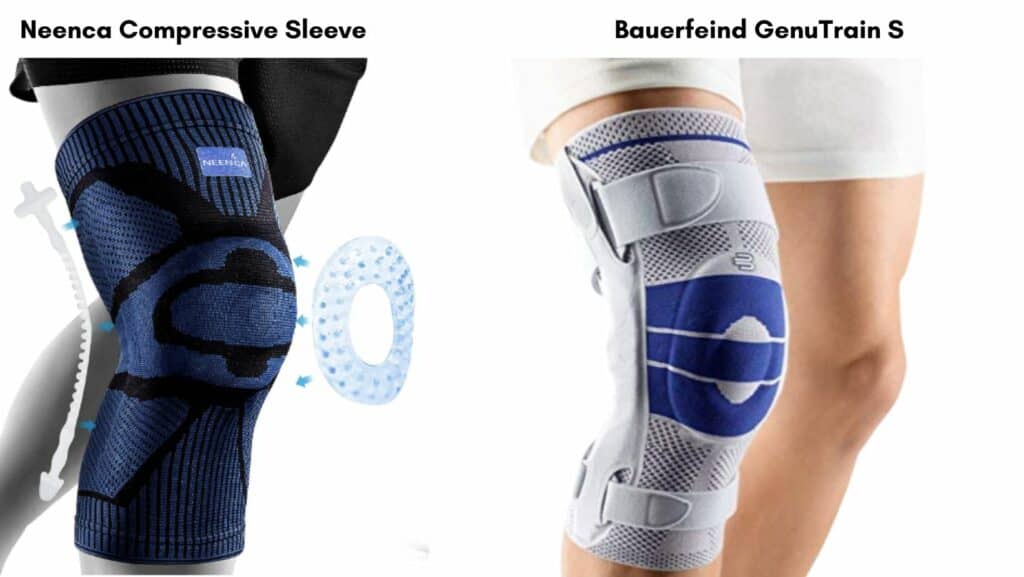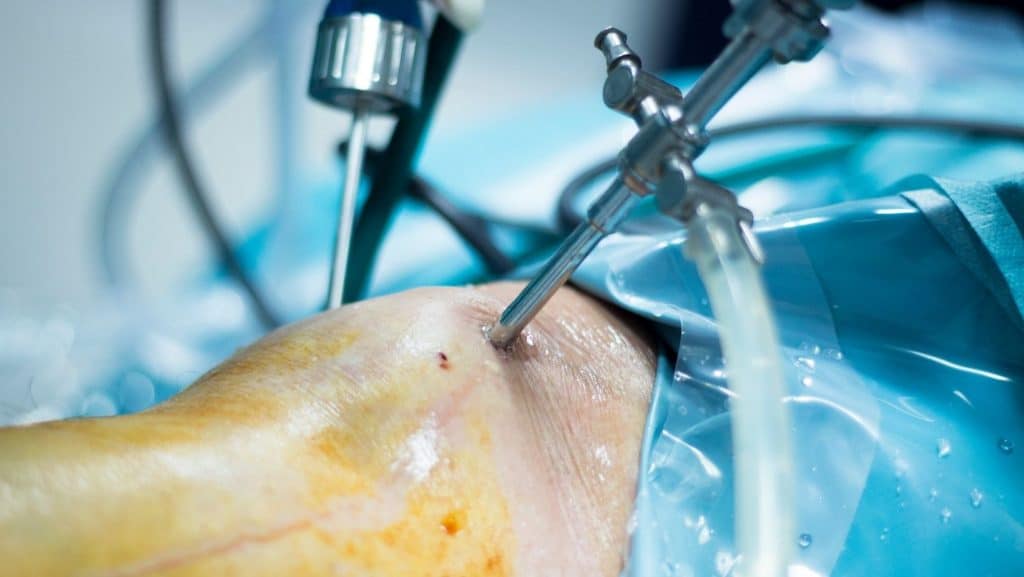Lateral Meniscus Tear: Symptoms, Causes and Diagnosis
Read More >
James McCormack is a Physical Therapist who specialises in knee, foot & ankle injuries. www.james-mccormack.com is a participant in the Amazon Services LLC Associates Program, an affiliate advertising program designed to provide a means for sites to earn advertising fees by advertising and linking to Amazon.com.
The meniscus is a thick fibrocartilage structure in the knee, that sits between the flat surface of the tibia and the rounded end of the femur bones. The lateral meniscus is the outer part, and there is also a medial part. The roles of the meniscus are to provide greater stability in the joint, provide cushioning and absorb impact. Injury to either meniscus can cause tears in the structure.
For a lateral meniscus tear, treatment choice depends on the specific diagnosis. The grade of injury, the type of tear and the location of the tear will all influence healing time and prognosis, as well as the type of treatment that will be most effective.
The conservative treatment protocol for a lateral meniscus tear consists primarily of rest or reduced activity, and physical therapy. Non-surgical treatment is effective for low-grade tears, where there is less loss of function of the joint. High-grade tears such as severe grade 2 and grade 3, are more likely to have issues of instability, locking of the joint or giving way. In these cases, physical therapy may not be as effective as the sole management.
The location of the injury will impact the choice of treatment as the meniscus has a poor blood supply, so healing is slow. The blood supply to the outer rim of the crescent-shaped meniscus is poor but present. The further inwards, towards the middle of the meniscus the less blood supply there is, and there is no blood supply to the inner half of the meniscus. The meniscus is nourished and maintained by a network of microtubules that move essential elements to the middle. Therefore, healing to the middle is minimal and can influence whether physical therapy alone or surgery and physical therapy are offered as treatments.

The early phase of rehab and recovery needs to provide the meniscus with the space and time to heal, if the tear is in an area where this is possible to heal. If the tear is in an area where it is unlikely to hear due to the lack of blood supply, this period is still important as it can allow the inflammation to settle and the body may become less sensitive to the injury. This period may be complete rest, or a significant reduction of impact activity, which will include walking. Other movements such as deep squatting, stairs and twisting should also be completely avoided during this rest period. The following phase, once symptoms of pain and swelling have settled, is to build up strength and stability of the joint, by working the surrounding muscles. By looking at the biomechanics of the individual, and their strength and flexibility, specific exercises can be set to address their individual needs. Stability of the knee not only comes from the muscles directly around the knee but also those around the hip, which influence the movement of the femur, and those of the foot and ankle, which influence the movement of the tibia.
Common exercise protocols will focus on strengthening the specific muscles around the knee, such as the quadriceps, hamstring and calf. Additionally, strengthening the gluteal muscles at the hip, and strengthening the ankle muscles such as the peroneals and tibialis posterior.
You can read our related article for specific exercises that may be helpful for you: Lateral Meniscus Tear Exercises.
Home treatments to reduce pain can include taping the knee. A popular choice is KT tape as it is elastic and flexible and does not restrict movement. The tape can support the knee and improve proprioception, which is the awareness and control of the movement of a joint.
A knee brace can be used for a similar reason if it is an elasticated tight sleeve. But there are also more structured knee braces that can provide more stability at the joint. These are more effective for individuals with symptoms of instability or giving way. A knee brace may also be helpful for the final stages of recovery if you are returning to sport. The extra support can be helpful from a psychological perspective but also offer protection if an unexpected movement, fall or tackle stresses the knee.

The Bauerfeind GenuTrain S, is a well-structured and supportive knee brace. It is useful for those who have symptoms of instability and need more support from a brace. The Neenca compressive knee sleeve, it offers less support but has more compression around the knee. This is good if you have a lot of swelling and need less support.
Recovery from a low-grade tear to the outside of the meniscus has a better prognosis than larger complex tears, or those to the middle portion of the meniscus. A lateral meniscus tear recovery time will depend on these factors as well as the patient’s health, strength and compliance to treatment and management protocols. The healing time for a low-grade lateral meniscus tear is 4-6 weeks, but higher grade or poorly located tears may take 3-4 months.
In cases where physical therapy alone is thought to be effective, but symptoms of pain are not settling, a corticosteroid injection may be administered. Steroid injections reduce inflammation, and this can reduce pain, making it less aggravating so that the individual is able to complete their physical therapy rehab exercises. Medications such as ibuprofen, a non-steroidal anti-inflammatory, can have a similar effect to a lesser degree. You may therefore be recommended to take a course of these when starting your rehabilitation.
Lateral meniscus tear surgery is offered to those who have functional limitations such as locking, giving way or instability, as well as pain, or those who have not improved with a significant and effective period of physical therapy. Most complex or large tears on the inner part of the meniscus will need surgery as they will not heal on their own. The type of operation is also chosen based on the capacity for the tear to heal. Repair surgery will only be done on tears in the outer part of the meniscus as there is a potential for healing, due to the blood supply. Other surgeries include debridement of loose bodies or removal of the injured portion of the meniscus, this is called a meniscectomy. In most cases, surgery will be done via arthroscopy, or keyhole surgery, as recovery from arthroscopy is much faster than open surgery.

Lateral meniscus tear surgery recovery is usually good with most individuals recovering from meniscectomy in 4- 6 weeks and from a meniscus repair in 3-4 months. The long-term risks of surgery are a greater risk of earlier onset osteoarthritis of the knee joint than individuals with no knee injury and who have not had surgery.
This is not medical advice. We recommend a consultation with a medical professional such as James McCormack. He offers Online Physiotherapy Appointments for £45.